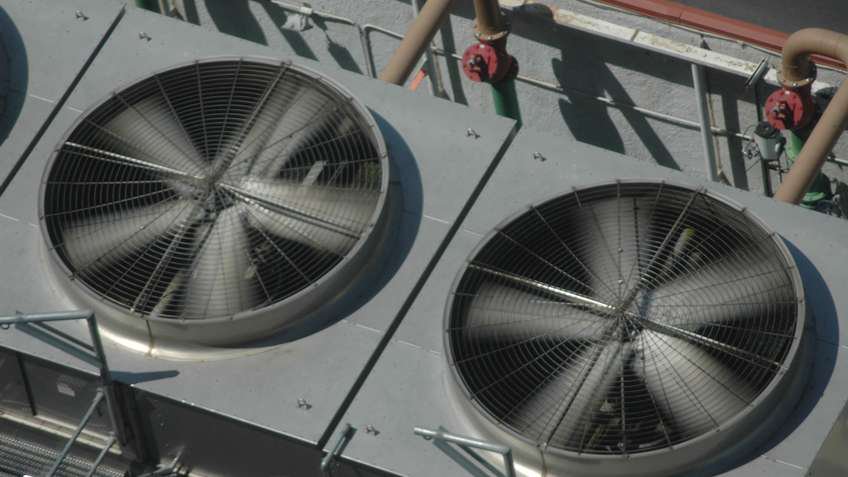Recommended For You
A variable frequency drive (VFD) can be used to control multiple motors in some applications provided the right design considerations are made and appropriate protection is provided for each motor.
This offers several advantages such as lower cost, reduction in panel space and reduced control complexity.
If the application falls within these specific conditions – and each motor can operate at the same speed and can accommodate a VFD as a single point of failure – the next step is to review design considerations and to select the right components. The VFD must be sized properly, and each motor needs protection. The following guidelines are recommended:
- Add FLA of all the motors and add 20% (to accommodate lower leakage inductance) to select the VFD size
- Set correct current ratings
- On some drives it is not recommended to size below 3 hp due to capacitive coupling (cable charging current)
- Adding a common mode core and using XLPE cable will help to minimize cable charging current
- Drives should be set in V/Hz motor control
- It is not recommended to “line start/stop” the motor when the VFD is running
- Provide overload protection for the individual motor
In multiple motor applications, NEC §430, part III, requires individual motor overload protection, which is (thermal) overload function, on the load side of a VFD.
This is required because a VFD can only sense its total connected load and cannot sense which individual motor is drawing high current. Therefore it cannot provide appropriate overload protection.
There are many applications that use multiple motors of the same capacity operating in parallel at the same speed. Here is the opportunity to ask:
- Can I use one variable frequency drive (VFD) to control these multiple motors?
- Does it help to optimize the panel for cost as well as space?
- Do I have the right components to help protect individual motors in such a configuration?
Not all types of overload protection devices are suitable for application at the output of a VFD. Due to the PWM voltage pulses and surge impedance of the motor, reflections of the voltage pulses occur at the terminals of the motor. Their amplitude is dependent upon:
- System voltage
- Voltage rise time of the VFD
- Current rating (surge impedance) of the motor protection circuit breaker (MPCB)
- Operational voltage
- Location of the MPCB and cable type and length between MPCB and motor (surge impedance)
Here are some challenges for overload protection devices at the output of VFDs:
- For electronic overload relays, their current sensor technology may not be able to measure the load current and harmonics correctly when operating at frequencies outside their nominal sensing range.
- For standard MPCB, their challenges are related to reflection of voltage pulse that cause high dielectric stress on the MPCB magnetic trip coils resulting in accelerated aging.
It is recommended to restrict the cable length between the MPCB and the motor below the maximum permissible (“critical”) cable length at which the reflected voltage phenomena is fully developed.
Using one VFD to control multiple motors, with the right design considerations, helps reduce the cost, footprint and control complexity of your application.
Visit our website to learn more about our family of motor protection circuit breakers and our low voltage AC drives.
Published February 13, 2017


